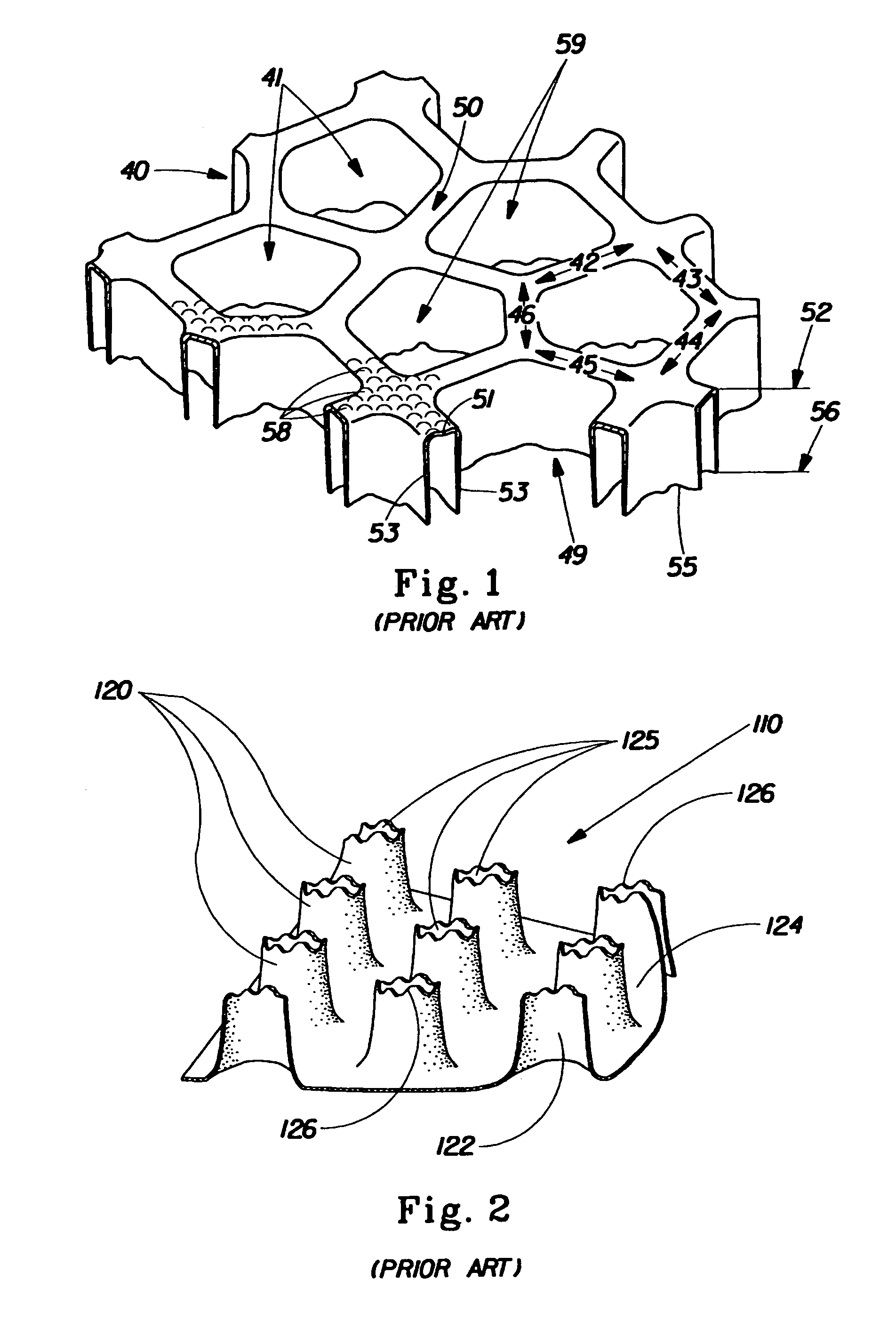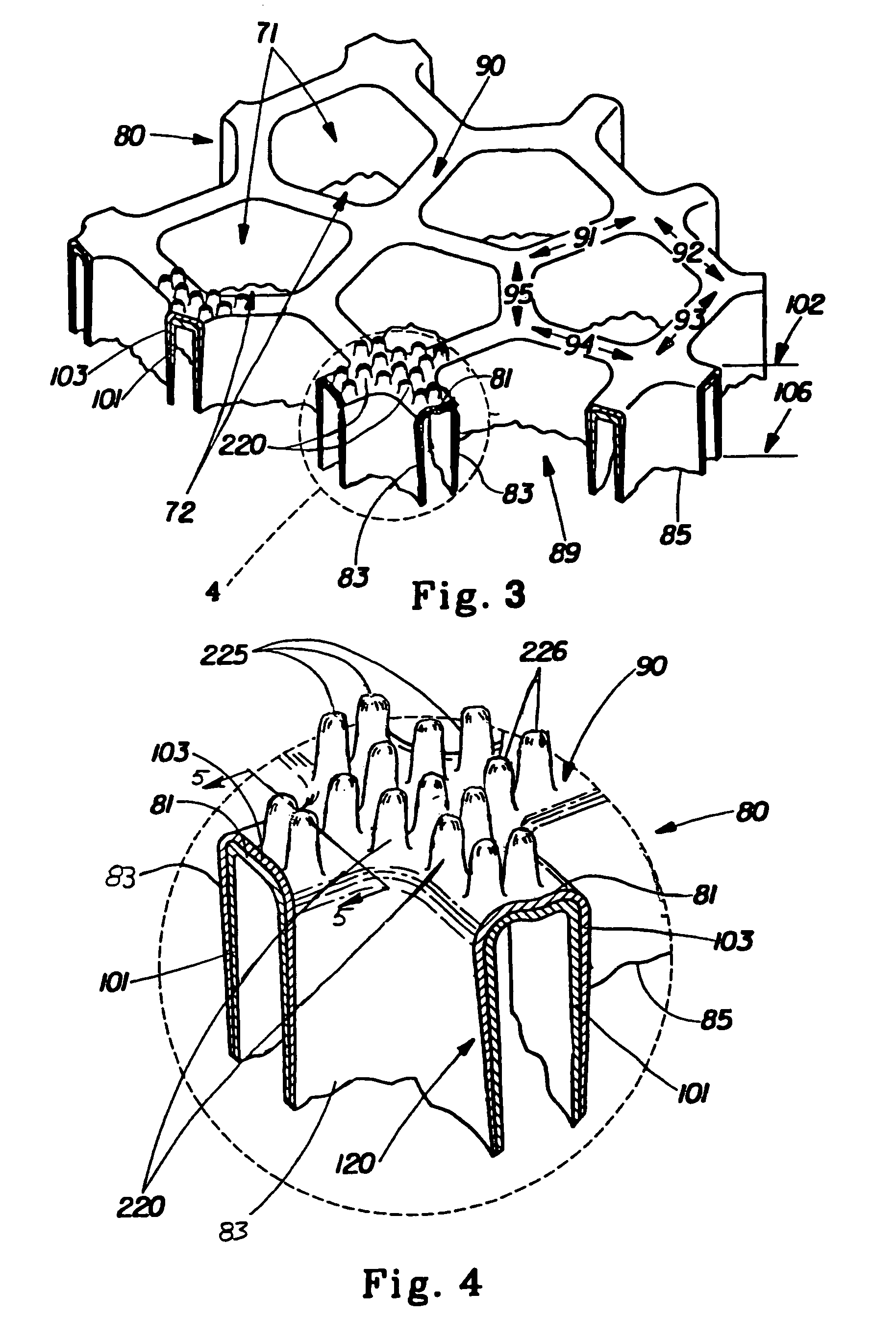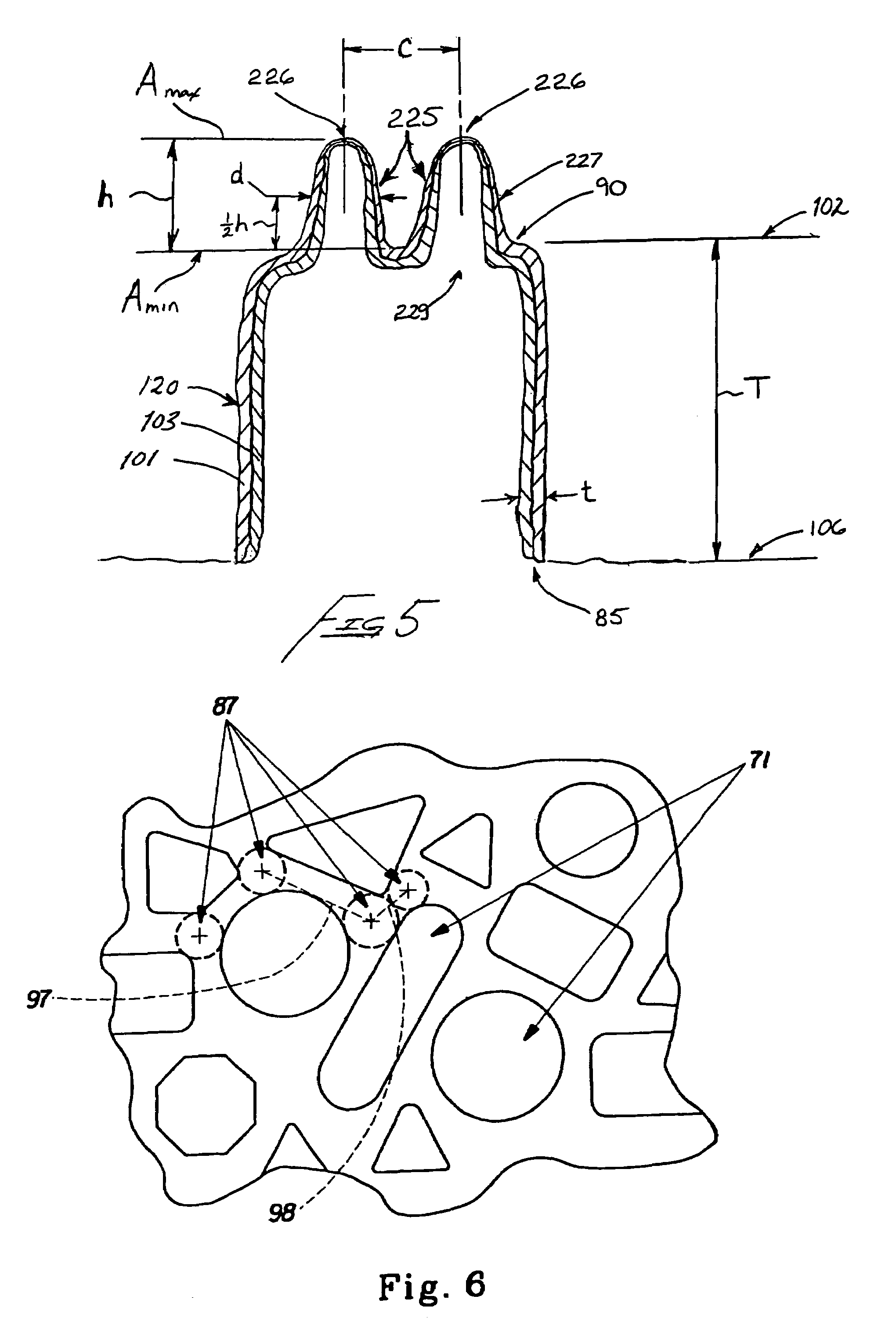Apparatus and method for making a forming structure
a technology of forming structure and apparatus, applied in the field of forming structure, can solve the problems of reducing fluid retention, affecting the smoothness of the surface aberration of the web, and affecting the smoothness of the surface aberration,
- Summary
- Abstract
- Description
- Claims
- Application Information
AI Technical Summary
Benefits of technology
Problems solved by technology
Method used
Image
Examples
Embodiment Construction
[0062]FIG. 1 is an enlarged, partially segmented perspective illustration of a prior art macroscopically-expanded, three-dimensional, fluid pervious polymeric web 40 formed generally in accordance with the aforementioned U.S. Pat. No. 4,342,314. Webs of this type have been found to be highly suitable for use as a topsheet in absorbent articles such as sanitary napkins, pantyliners, interlabial devices, and the like. The fluid pervious web 40 exhibits a plurality of macroscopic surface aberrations that can be apertures, such as primary apertures 41. Primary apertures 41 are formed by a multiplicity of interconnecting members, such as fiber like elements, e.g., 42, 43, 44, 45 and 46, that are interconnected to one another to define a continuous first surface 50 of the web 40. Each fiber like element has a base portion, e.g., base portion 51, located in plane 52 of first surface 50. Each base portion has a sidewall portion, e.g., sidewall portion 53, attached to each longitudinal edge ...
PUM
 Login to View More
Login to View More Abstract
Description
Claims
Application Information
 Login to View More
Login to View More - R&D
- Intellectual Property
- Life Sciences
- Materials
- Tech Scout
- Unparalleled Data Quality
- Higher Quality Content
- 60% Fewer Hallucinations
Browse by: Latest US Patents, China's latest patents, Technical Efficacy Thesaurus, Application Domain, Technology Topic, Popular Technical Reports.
© 2025 PatSnap. All rights reserved.Legal|Privacy policy|Modern Slavery Act Transparency Statement|Sitemap|About US| Contact US: help@patsnap.com



